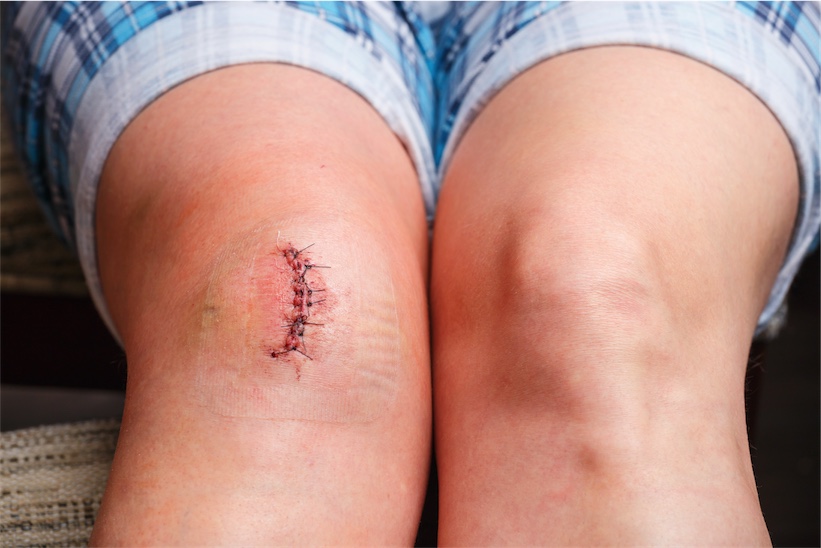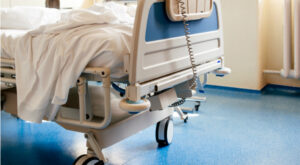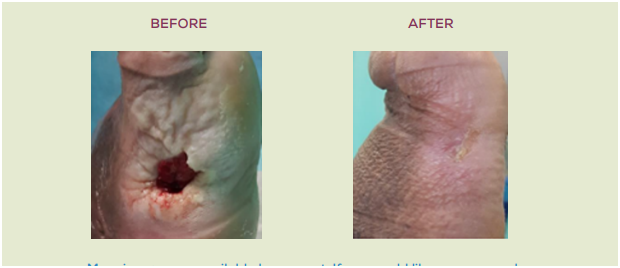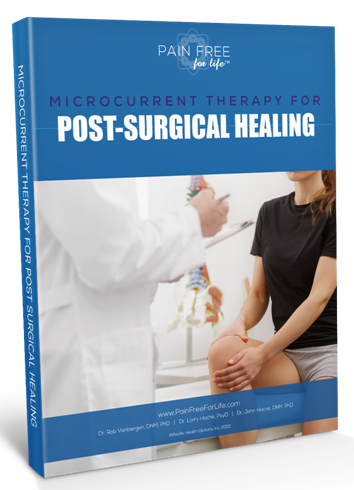
Surgery is something we all hope to avoid in our lifetimes. But the fact is many of us will need surgery at some point or another. In fact, an estimated 48 million surgical inpatient procedures were performed in the United States in 2009 alone.
Of those 48 million surgeries:
- A whopping 1.2 million were related to the nervous system
- 3 million were related to the respiratory system
- And 5.3 million were skeletal in nature.
With so many of us needing support, we decided that it was time to share everything we’ve learned in our 70+ years of combined practice when it comes to healing from an operation or surgery. We have witnessed incredible results in our clinic in patients who were stalling in their recovery post-op. How? Through the revolutionary method developed by Dr. John Hache, DNM, Ph.D. & Dr. Lorry Hache, PsyD – The Hache Protocol for Pain Resolution™ and microcurrent therapy.
What to Expect Post-Op

The healing process after surgery is a highly individualized experience. The type and nature of your procedure will determine how you approach the healing process, so it’s important to know what kind of care is right for you before making any post-op plans.
Types of post-op experiences can include:
- Inpatient care: This care is for people who have had surgery and need extra attention while recovering. It can include things like dressing, bathing, or taking medications as ordered by your doctor. Still, it’s not always necessary if you’re recovering well with minimal assistance from family members during this process!
- Outpatient care: With outpatient care, there may be some restrictions in place depending upon your procedure, but most of your healing will take place at home, save for follow-up appointments.
- At-home post-operative care: The post-operative period is a time of significant change and uncertainty. You may feel like your life will never go back to what it was before, but with patience, things can and will get easier in this crucial phase after surgery! Listen carefully for instructions from doctors or nurses during recovery so that you don’t miss any important steps. And remember, always take all medications as prescribed, watch out for potential issues such as infections (which could lead to complications), and always keep follow-up appointments as scheduled.
Once you reach at-home post-operative care, you can start incorporating microcurrent therapy into your treatment plan.
Post-Op Medications

Upon completion of the surgery, you may be prescribed several medications to help with your recovery. Some common post-operative drugs include painkillers and anti-inflammatory medicines. When taking these prescription meds, it is essential to understand what they do.
The most popular types of post-op medications are:
- Pain medications: Think opioid drugs and over-the-counter analgesics such as Tylenol and ibuprofen.
- Anticoagulants: These drugs help to stop clotting after surgery.
- Scar treatments: Whether surgically removed or with punch grafts, traditional scar tissue treatments can be incredibly invasive.
- Symptom-reducing medications: These drugs can treat anything from nausea to constipation (two common side effects of anesthesia).
A note on opioids: Opioids are a class of drugs that can be highly addictive and cause people to rely on them too much. The problem with this is the danger factor. If you take an excessive amount or stay addicted for long periods, your body will start ignoring its natural pain signals to avoid being treated with these powerful medications, instead of creating dangerous dependence loops where we need even more opioids than before!
Common Post-Surgical Complications
As we mentioned above, the surgical healing process is very individualized, and no two bodies will react to healing in the same way, but there are a few similarities we see in most cases of post-operative recovery; these include:
- Nausea
- Constipation
- Urinary issues
- Depression/ low mood
- Insomnia
- Lingering scar tissue
- Wound dehiscence
- Acute and chronic pain
- Infection/ sepsis
- Sore throat
The question remains, how do we treat these troubling yet common side effects of surgery? We propose microcurrent therapy!
How to Address Post-Surgical Complications with Microcurrent
Microcurrent is a safe and effective way to help your post-surgical healing without the need for painful injections, addictive drugs, or long recovery periods. Microcurrent therapy can be applied directly on top of surgery sites as well as over wound dressings with the help of a PEMF generator, like our QiWave PEMF Pad.
See what our patients are saying about using microcurrent and The Hache Protocol ™ for post-surgical healing success:
“I purchased an Avazzia Life Evolution to work on my abdominal adhesions from two C-Sections. After my first treatment, I reduced my pain from a 7 to a 4, and it stayed there! I have been further reducing the pain and feeling less tight with every treatment since. I only wish I had found this sooner!”
–Mary Ann T.
Microcurrent in Action: Wound Healing with Microcurrent
Dr. John Hache participated in a revolutionary research study that focused on treating 100 patients with diabetic foot ulcers in Malaysia. Because other treatments failed, all participants faced amputation as the last treatment route.
Using the Avazzia Pro Sport III (which we’ve since upgraded to the Avazzia Life Pinnacle) in conjunction with the ViaQi on his patients, Dr. Hache successfully accelerated wound healing, and the results were astonishing. Microcurrent therapy decreased inflammation and restored blood flow while accelerating tissue repair.
This groundbreaking study presented a 100% success rate for participants, allowing them the opportunity to forego amputation altogether. Today, microcurrent therapy is Malaysia’s first line of defense for non-healing wounds.
Due to the tremendous interest in microcurrent wound healing, Dr. Hache’s study is being replicated in the U.S. at Baylor University and Stanford University. We are honored and proud to contribute to this exciting and life-changing area of medicine as it rapidly advances.
These images show Dr. Hache’s success in healing diabetic foot ulcers in his Malaysian study

Introducing: Microcurrent Therapy for Post-Surgical Healing
We could write an entire book on how microcurrent therapy and The Hache Protocol™ support post-surgical healing; in fact, we just did! Our newest eBook, Microcurrent Therapy for Post-Surgical Healing, aims to share what we’ve learned in our decades of experience helping out patients recover from a variety of common surgeries with the help of microcurrent therapy.
To get access to our 4 step healing process, game-changing tips from Dr. Rob, and step-by-step directions for our most effective microcurrent protocols for post-surgical healing, pick up a copy of the book today!
In the meantime, please listen to our recent podcast episode on the topic of post-surgical healing here:
How to Heal Rapidly from Surgical Pain
Sources cited:







